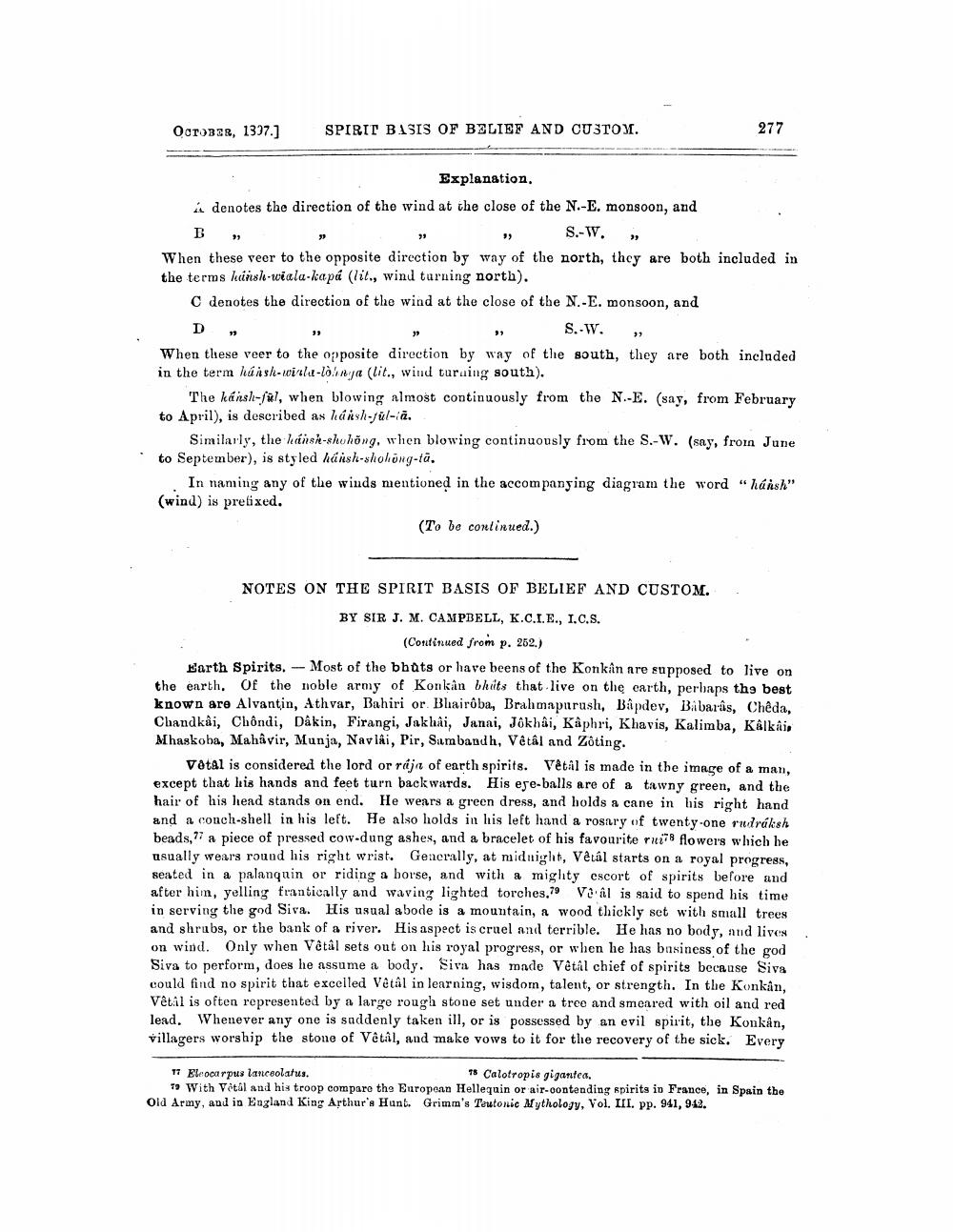________________
OCTOR, 1397.)
SPIRIT BASIS OF BELIEF AND CUSTOM.
277
в
»
Explanation, á denotes the direction of the wind at the close of the N.-E. monsoon, and
»
S.-W. » When these veer to the opposite direction by way of the north, they are both included in the terms kainusl-riala-kapá (lit., wind turning north).
C denotes the direction of the wind at the close of the N.-E. monsoon, and D
, S.-W. When these veer to the opposite direction by way of the south, they are both included in the term haish-winlu-lonja (lit., wind turaing south).
The kánsk-fæl, when blowing almost continuously from the N.-E. (say, from February to April), is described as há ish-ful-ia.
Similarly, the bansk-shuhõng, when blowing continuously from the S.-W. (say, froin June to September), is styled haish-shohong-ta.
In naming any of the winds mentioned in the accompanying diagram the word "háish" (wind) is prefixed.
(To be continued.)
NOTES ON THE SPIRIT BASIS OF BELIEF AND CUSTOM
BY SIR J. M. CAMPBELL, K.C.I.E., I.C.S.
(Continued from p. 262.) Earth Spirits. Most of the bhùts or have beens of the Konkân are supposed to live on the earth. Of the noble army of Konkân bkits that live on the carth, perbaps the best known are Alvantin, Athvar, Bahiri or. Blairóba, Brahmapurush, Bapdev, Babarís, Chêda, Chandkâi, Chôndi, Dakin, Firangi, Jakhai, Janai, Jókhai, Kåphri, Khavis, Kalimba, Kálkais Mhaskoba, Mahavir, Munja, Navlai, Pir, Sambandh, VetAland Zoting.
Vetal is considered the lord or raja of earth spirits. Vētal is made in the image of a man, except that his hands and feet turn backwards. His eye-balls are of a tawny green, and the hair of his head stands on end. He wears a green dress, and holds a cane in his right hand and a conch-shell in his left. He also holds in his left hand a rosary of twenty-one rulráksh beads, 7 a piece of pressed cow-dung ashes, and a bracelet of his favourite ruil flowers which he usually wears round his right wrist. Generally, at midnight, Vêtál starts on a royal progress, seated in a palanquin or riding a borse, and with a mighty escort of spirits before and after him, yelling frantically and waving lighted torches,79 Vaal is said to spend his time in serving the god Siva. His usual abode is a mountain, a wood thickly set with small trees and shrubs, or the bank of a river. His aspect is cruel and terrible. He has no body, and lives on wind. Only when Vêtål sets out on his royal progress, or when he has business of the god Siva to perform, does he assume a body. Siva has made Vêtâl chief of spirits because Siva could find no spirit that excelled Vêtâl in learning, wisdom, talent, or strength. In the Konkan, Vêtil is often represented by a large rough stone set under a tree and smeared with oil and red lead. Whenever any one is saddenly taken ill, or is possessed by an evil spirit, the Konkån, villagers worship the stone of Vêtal, and make vows to it for the recovery of the sick. Every
17 Eleocarpus lanceolatus.
15 Calotropis gigantea. 19 With Vētal and his troop compare the European Hellequin or air-contending spirits in France, in Spain the Old Army, and in England King Arthur's Hunt. Grimm's Teutonic Mythology, Vol. III. pp. 941, 942.




